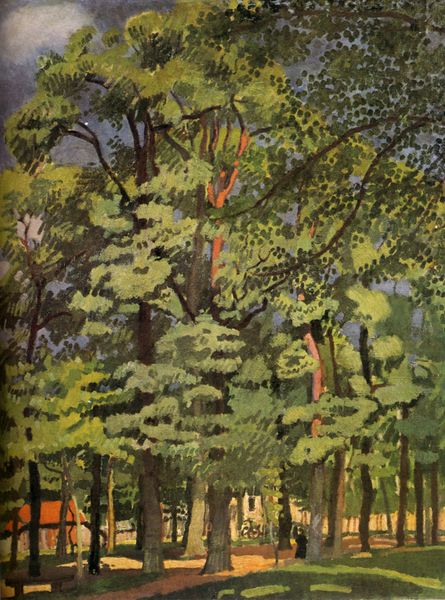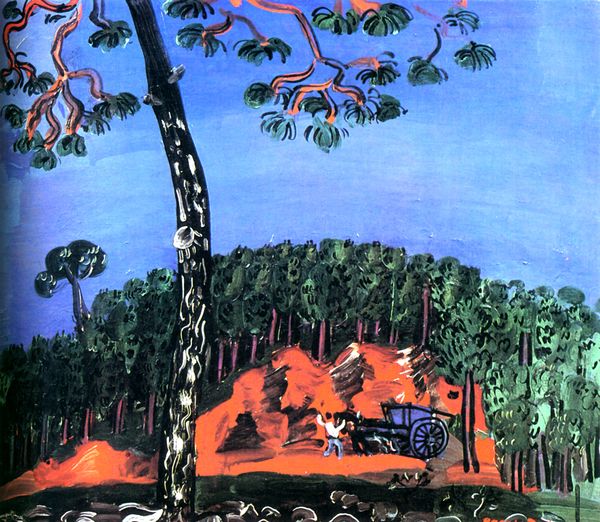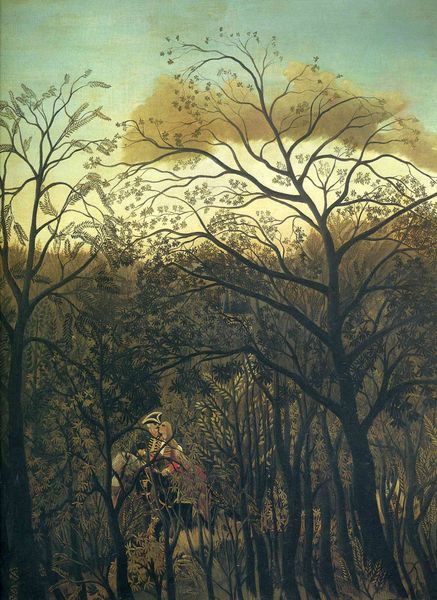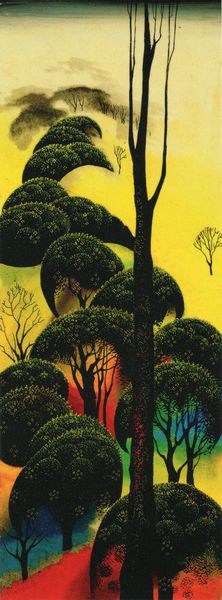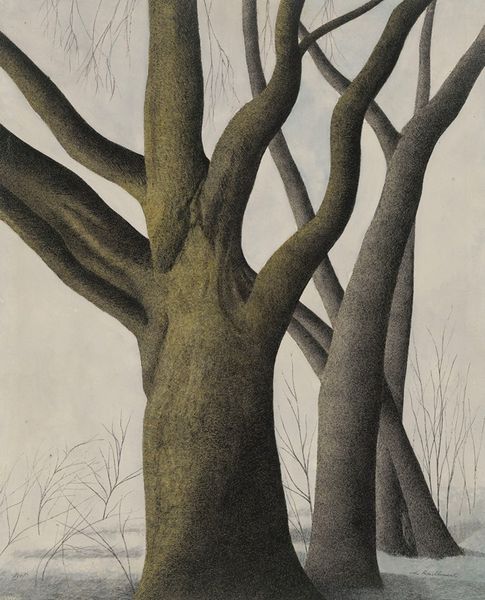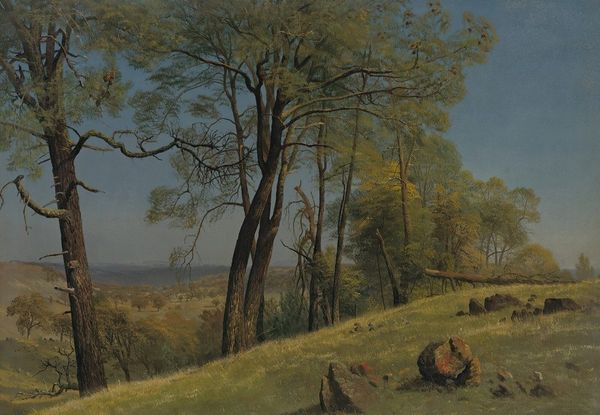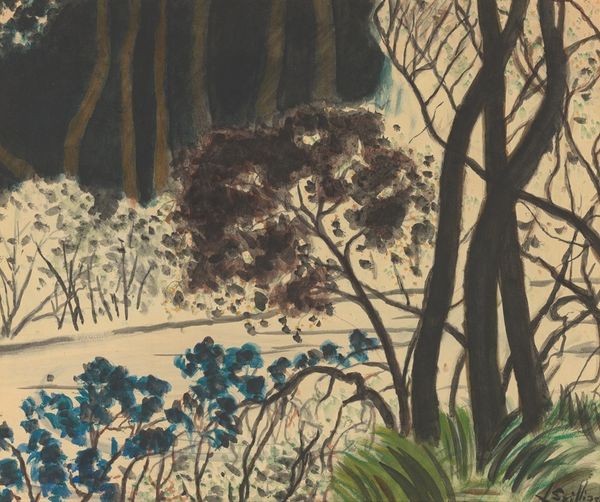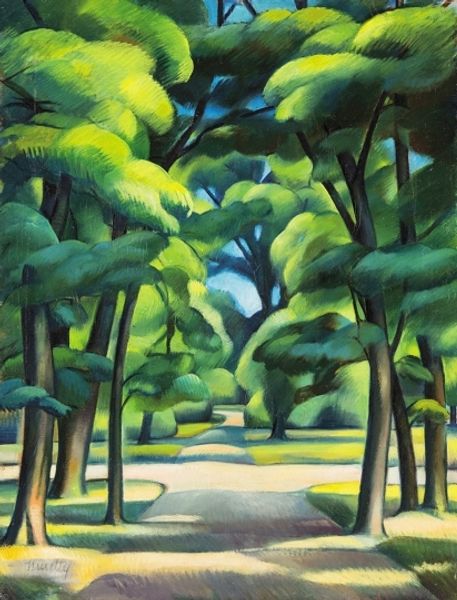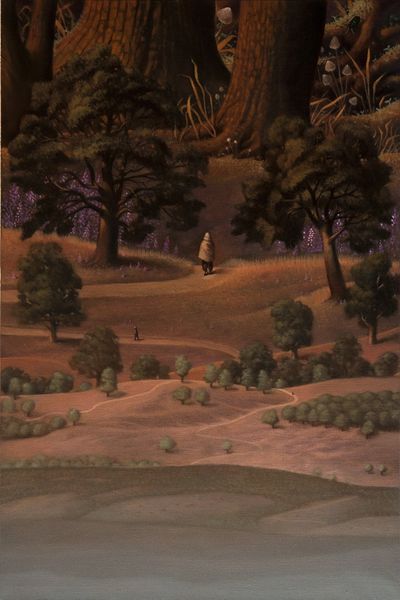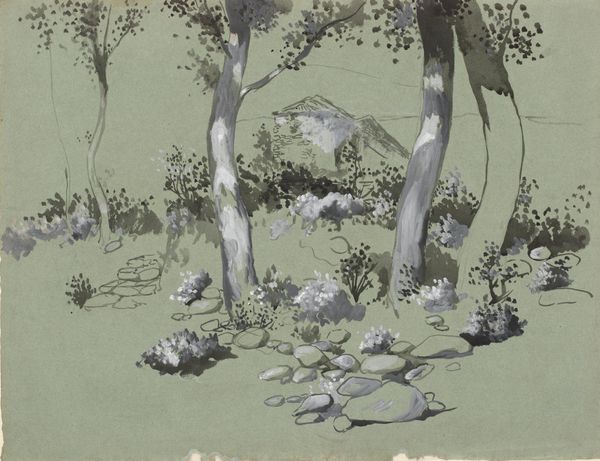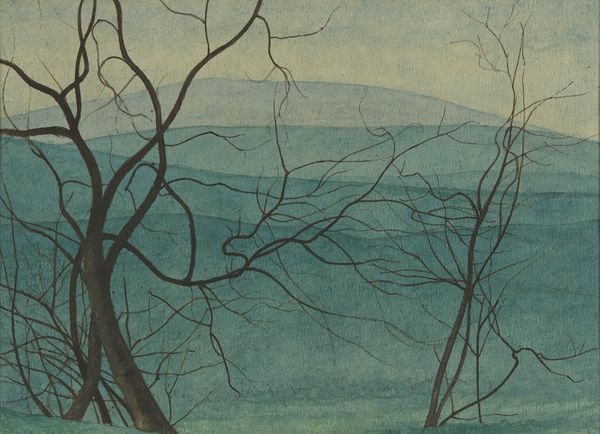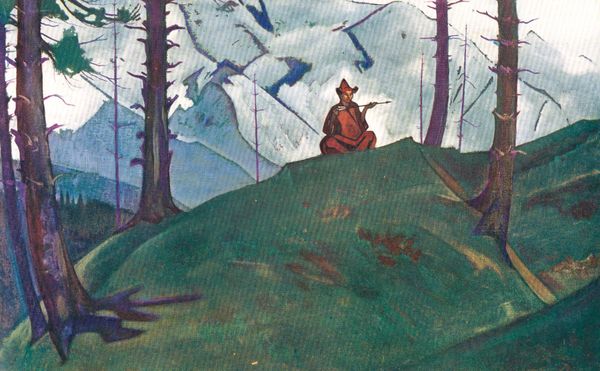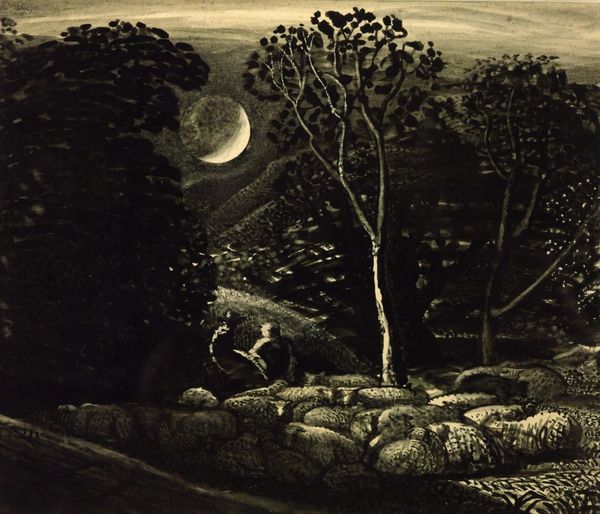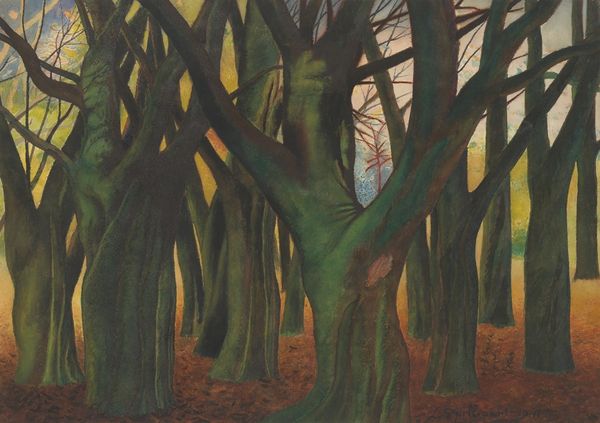
painting, plein-air, oil-paint
#
portrait
#
tree
#
painting
#
plein-air
#
oil-paint
#
landscape
#
figuration
#
forest
#
symbolism
#
post-impressionism
#
realism
Dimensions: 60 x 70 cm
Copyright: Public domain
Curator: This is Henri Rousseau's "The Walk in the Forest," painted in 1890. It's currently held at the Kunsthaus Zürich. What strikes you about it? Editor: The initial impact is strangely calming. It's the layering; the dense forest depicted with meticulous detail, and then this lone figure positioned just slightly off-center, making her the focal point. It gives a certain stillness to the artwork. Curator: Precisely. Note the deliberate placement of each tree, the variations in tone creating depth. Consider the way Rousseau manipulates perspective, almost flattening the space. There’s a certain structural rigor at play. He flattens it, but then the texture almost feels elevated, tactile even. Editor: And the texture undoubtedly comes from the materials and their manipulation. The paint is visibly applied, isn’t it? The oil seems layered to build that effect, almost like the build up of the earth. Knowing Rousseau's background is essential. He was largely self-taught. Did his limited academic training somehow affect his application, giving his paintings this signature flatness? Curator: A provocative idea! But I argue the ‘naïveté’, or self-taught aspect, reinforces his engagement with Symbolism and an artificial sense of realism. Each element—tree, leaf, garment—exists with an almost self-aware presence. Editor: Still, consider his laborious layering of pigment to achieve these deep shades of green. Rousseau might not have toiled in fields like a peasant, but this level of handwork must surely translate. The painting is a crafted object and reveals the time and attention inherent in the work. Is it possible to consider how his 'naive' construction reveals the limitations of bourgeoise life he experienced as an outsider? Curator: Perhaps, but to interpret it purely through that lens overlooks the powerful composition. Rousseau arranges form and color to evoke a feeling; one beyond simple social critique. Editor: True enough. However, isn't considering the materials and mode of production also vital to understand the final, evocative result? We see that division everywhere and it speaks to so much about artistic context. Curator: An essential counterpoint. Ultimately, "The Walk in the Forest" stands as an intriguing dialogue between formal artifice and the hand of its maker, forever open to new interpretations. Editor: Agreed, and considering it materially adds further depth to unravel the intricacies of its artistic expression and underlying influences.
Comments
No comments
Be the first to comment and join the conversation on the ultimate creative platform.
